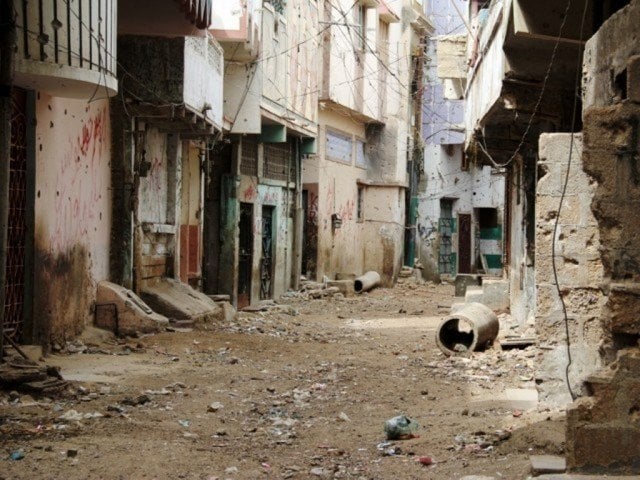
ISLAMABAD: A new study by urbanist Reza Ali, based on satellite imaging, declares that Pakistan is now predominantly urban with almost 70% population living in urban areas.
Almost half the urban population in Pakistan lives in informal settlements, including katchi abadis. By this account, at least 63 million citizens of Pakistan are slum dwellers. What has the state or market done for them so far?
These lack services, public approvals (in the form of planning and building permissions), and tenure security. Half of Karachi’s population lives in slums. These places are often vulnerable to natural hazards and even a refuge for criminal activities.
Very significantly, with a growing and large population creating huge unmet demand for housing, it is surprising to see the single family home fixation—which applies even for the poor. Punjab province has built a housing development for the poor that is 25 miles from the centre of Lahore. However, the poor would always prefer to live inside the cities, where they can access work places easily and cheaply.
It is not just the government but also the civil society and the private sector that are fixated over single family homes. Consider the incremental housing model, introduced by the famed Tasneem Siddiqui, which formed the basis of four new informal settlements in Karachi and Hyderabad. Later on, low income housing units have also been provided by private sector companies. However, all of these initiatives are single family home centric. In this way, the conversion of irrigated arable land into housing colonies is accelerating and pressure on trunk infrastructure is enormously rising.
The fact is that cities do not have surplus land available for conversion into sufficient number of housing units to be built horizontally as per the demand. Urban planning has to go vertical.
Can markets offer any solution for slum dwellers or should they be left alone? In almost all cases, they occupy state land, and thus pay some informal fees to powerful local groups. Most of them are self-respecting, hard-working souls earning for their families. Thus, their income can be tapped to be converted into savings and house ownership, which they can rent and own.
All slums sprawl horizontally, wasting huge tracts of land. Re-zoning can generate the tapped wealth in the land. In any urban slum, the land can be re-classified, high rise apartment buildings can be built in one-fifth of the area, and remaining land can be sold at significant capital gains due to appreciation. These gains can be spent on construction of flats of the same dwellers, who can be given property rights at very nominal charges.
The government does not have to spend a penny; only use its power of law. It can redefine property rights, zoning rules and building codes and can create a new asset class. Government need not, and should not, invest money. The private sector will be forthcoming in investment.
There is a large unmet demand for all manner of urban activity. The market will quickly identify and respond to supply this need. Estimates of Pakistan’s informal economy and diaspora investment potential suggest that financing for such investment would be readily available. Such activity would also bring in foreign investors.
We believe that the city planners should abandon the idea of 3 marla housing units outside the city for the poor. The best solution for solving the urban slums problem is construction of high rise buildings, through the private sector, within prime urban land where jobs are likely to be available. While rich can afford a sub-urban life, poor cannot commute long distances.
City zoning needs to be deregulated to allow for the kind of city that is conducive to jobs and growth. We argue for density, high rises, mixed use, and walkability. To achieve this outcome, cities will have to move out of the older suburban model and allow some creative destruction of single family homes. Densification will have to happen in prime areas where outmoded regulations are holding development back.
Ali Salman is Founder and Executive Director of PRIME Institute and Dr Nadeem-ul-Haque is Pakistan’s former Deputy Chairman of the Planning Commission
Published in The Express Tribune, June 27th, 2016.
Like Business on Facebook, follow @TribuneBiz on Twitter to stay informed and join in the conversation.
















































COMMENTS
Comments are moderated and generally will be posted if they are on-topic and not abusive.
For more information, please see our Comments FAQ